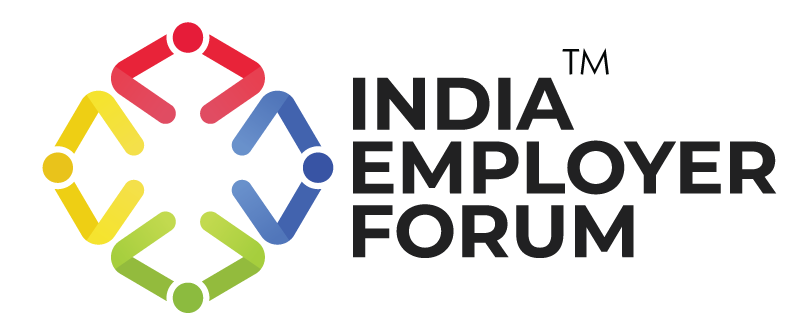The September 21st announcement of a $100,000 fee on all new H-1B Visa petitions marked one of the most consequential changes in U.S. immigration policy in decades. While this decision, framed within the “America First” agenda, strives to reduce reliance on foreign labor and prioritize domestic hiring, its ripple effects will extend far beyond Washington. U.S. businesses will now face heightened talent shortages, Indian professionals—who form the bulk of H-1B applicants—will confront disrupted career aspirations, and India’s economy must brace for both challenges and unexpected opportunities. This policy is not merely about fees; it represents a fundamental realignment of global talent flows, business strategies, and economic linkages between the U.S. and India.
Talent Crunch for U.S. Companies
In July 2025, the H-1B lottery saw roughly 470,000 eligible registrations competing for the 85,000 visas available, meaning more than 300,000 applicants could be discouraged from applying in future cycles due to the newly imposed $100,000 fee or employer reluctance to pay. With 71–75% of H-1B beneficiaries being Indian nationals, according to Reuters and the Pew Research Center, the majority of those affected will be Indian professionals. If employers limit sponsorship to only the most critical or senior roles, the effective number of new H-1B entries could decline by 30–50%, disproportionately impacting early-career and mid-level candidates.
The most immediate impact of the new policy will be a severe tightening of the U.S. talent pipeline. For decades, the H-1B program has filled gaps in critical sectors such as technology, healthcare, and engineering, where domestic supply falls short. By imposing this extraordinary financial barrier, the Trump administration has made it prohibitively expensive for employers to rely on international professionals. The consequences will involve a slowdown in innovation, a delay in project timelines, and a loss of competitiveness on the global stage. Startups with lean budgets are likely to face the greatest strain, as absorbing these steep hiring costs is unfeasible.
The burden will not end with the direct fee. Employers will also face indirect financial pressures from rising salaries due to intensified competition for domestic workers and increased investments in training and upskilling programs. Delayed projects and lost contracts may become routine as firms struggle to secure the talent they need.
Implications for Employees in the U.S.
The effect of this new policy on those employed in the US will vary depending on visa status. Current H-1B holders will not be impacted, as renewals and existing petitions are exempt. However, those hoping to switch employers may face uncertainty if such moves are treated as new petitions subject to the fee.
Students on post-graduation work permits, particularly those in OPT or STEM OPT, will feel the brunt of this change. If they missed the July 2025 H-1B lottery, future attempts will fall under the $100,000 rule, unless their employers are cap-exempt. While STEM OPT extensions provide a buffer of up to three years, many students will find themselves exploring alternatives such as intra-company transfers, cap-exempt H-1Bs with universities or nonprofits, or extraordinary ability visas. For families and dependents, the reduction in new H-1B entries narrows long-term settlement prospects in the U.S., creating further uncertainty.
Business Strategies and Adaptation
While industry groups and governments are expected to challenge the policy legally and diplomatically. Much will depend on whether courts uphold the President’s authority to impose such a steep fee unilaterally. If rolled back, the disruption may be temporary; if upheld, it could represent a long-term reconfiguration of how global talent integrates into the U.S. economy. Companies are already rethinking their strategies. H-1B sponsorships will likely be reserved for the most indispensable, high-value roles where no domestic substitutes are available. Employers are likely to invest more heavily in building domestic talent pipelines through apprenticeships, vocational training, and partnerships with universities. Others will expand relocation incentives to attract skilled U.S. workers from different regions.
At the same time, global business models will accelerate. Offshoring and nearshoring will become key strategies, with firms expanding operations in India, Canada, Mexico, and Eastern Europe. Remote work, now widely accepted, will allow companies to tap into global expertise without physical relocation. Additionally, companies may pursue legal recourse, challenging the fee’s legality in court, while also exploring automation and artificial intelligence to reduce labor dependencies. For some, alternative visa categories—such as the L-1 for intra-company transfers or O-1 for extraordinary ability—may provide a partial solution, though these come with strict criteria and scrutiny.
Impact on Indian Professionals and Economy
India, which accounts for nearly 70% of H-1B approvals, will experience both setbacks and opportunities. For students and professionals, the fee sharply reduces the possibility of pursuing U.S. careers. This will lead to a “brain gain,” as many talented students and professionals may choose to remain in India or redirect to countries with friendlier immigration policies, such as Canada, Australia, or the UK. While this may benefit India’s domestic institutions, it will also increase competition within the local job market, potentially pushing wages down in saturated tech hubs like Bengaluru and Hyderabad.
For the Indian economy, however, the influx of highly skilled returnees could energize the startup ecosystem. Entrepreneurs who once looked to Silicon Valley may now launch ventures at home, strengthening India’s innovation landscape. Large IT services firms like Infosys, TCS, and Wipro may also benefit, as U.S. companies expand outsourcing contracts to India rather than sponsoring workers. At the same time, remittance inflows may decline, a concern given their importance to India’s current account balance. The challenge for policymakers will be to harness this returning talent by doubling down on Skill India and Digital India programs, ensuring alignment with global demands.
A Turning Point in Global Talent Flows
Trump’s $100,000 H-1B fee is far more than a financial hurdle; it is a turning point in global workforce dynamics. For U.S. businesses, it introduces new costs, forces innovation in talent strategies, and may slow competitiveness. For Indian professionals, it disrupts established career pathways while creating opportunities for entrepreneurship and domestic growth. For the global economy, it signals a realignment of where innovation, talent, and opportunity will cluster in the coming years. The coming months—marked by legal battles, business adaptation, and policy responses—will determine whether this policy reshapes the system permanently or becomes another flashpoint in the ongoing debate over immigration and competitiveness.






